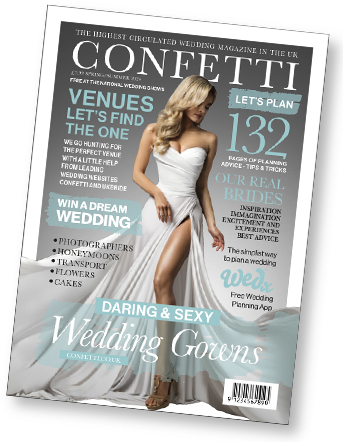Last year saw La Fête‘s founder Charlotte Ricard-Quesada get married twice, holding two drastically different weddings.
As part of La Fête’s Confetti takeover, Charlotte reveals what it was like to plan her two weddings at the same time, from how she created a different feel for both days, to whether the same guests attended both celebrations.

Planning Two Consecutive Weddings: A Personal Experience
It was never my intention to get married twice in the same year (to the same man, I should mention). The idea originally stemmed from our cultural differences: I’m French/English and he is Spanish, from Seville. It was important to my husband to get legally married in Spain, but also have a larger celebration, with all his family in attendance, as dictated by tradition; whereas I preferred a much smaller wedding, on the Atlantic Coast of France, where I’d dreamed of getting married since I was a child.
Instead of compromising on one wedding neither of us really wanted, with the support of my parents, we threw two radically different celebrations, a mere six months apart.
Our main concern was that we didn’t want one wedding to feel like his and the other to feel like mine, so we made sure to inject enough of our identities into them and make them standalone events.
We also didn’t want people to compare them, so we chose to host our Spanish wedding in an arabic palace and our French wedding in the ruins of a 12th century abbey (for the ceremony) and a 17th century military fort by the sea (for the reception). We also ensured our themes were very different, with one being regal and dramatic, while the other was inspired by a secret garden aesthetic.
As well as the dramatically different venues, we made sure that one was a day wedding (France) and the other was an evening celebration (Spain). This also influenced the dress code: morning suits and top hats for men, and cocktail dresses and hats for women in France; while in Spain, we chose a traditional black tie dress code, with tuxedos and gowns.

Season-wise, we also wanted to have a marked difference, with our Andalusian wedding in March (ironically, it was raining cats and dogs in usually sunny Spain!) and August in France, where the sun was shining more than usual. This also meant that our photos were completely different, as was the overall lighting: dramatic and overcast to sunny and excessively bright.
Our suppliers were also completely different: food, cake, flowers, stationery, hair & makeup… Our desire for uniqueness stretched to every single detail imaginable, which made our two weddings new and beautiful for not just our guests, but us too!
On the topic of guests, most of our guests attended both weddings, but there was a huge difference in numbers: our Spanish wedding had 260 guests while our French wedding had approximately 65.
It was our intention from the start that our French wedding would be smaller, not just because the island where we were wed is hard to travel to from Spain, but we wanted to make sure that we would be able to spend time with every single one of our guests, which we were unable to do in Spain because of the sheer number of people.
Our Seville wedding was also the occasion to invite certain guests by convention, such as my husband’s distant family who traditionally, would be in attendance of a relative’s wedding.
It was definitely challenging to get married twice in one year, and I’d only recommend it if you’re mentally prepared! But having had the experience and with hindsight, I wouldn’t change it for the world.
For more of La Fête’s Confetti takeover, check out their guide to what a wedding planner actually does.

